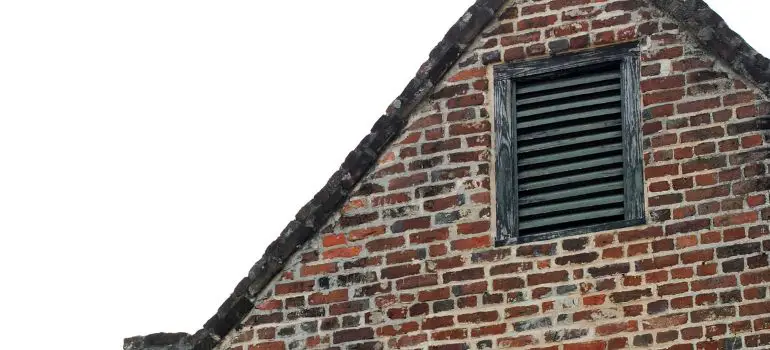Introduction
Gable vents are a crucial component of a well-ventilated attic, allowing hot air to escape and preventing moisture buildup. However, if not properly sealed, they can also be a source of energy loss and pests’ entry. In this article, we will guide you through the process of effectively sealing gable vents to enhance energy efficiency and protect your home from unwanted intruders.
Why Seal Gable Vents?
Before we dive into the steps, let’s understand why it’s essential to seal gable vents in the first place.
Energy Efficiency
Unsealed gable vents can let conditioned air escape, causing your HVAC system to work harder and increasing energy bills.
Pest Prevention
Gable vents can provide easy access for pests like birds, rodents, and insects to enter your attic, potentially causing damage.
Weather Protection
Sealing gable vents helps prevent rainwater and moisture from infiltrating your attic, which can lead to mold and structural issues.
Materials You’ll Need
To get started, gather the following materials:
1. Safety Gear
- Safety goggles
- Gloves
- Dust mask
2. Tools
- Ladder
- Screwdriver
- Caulk gun
- Utility knife
3. Sealing Materials
- Silicone caulk
- Expanding foam
- Vent covers
Step-by-Step Guide to Seal Gable Vents

Now that you have your materials ready, let’s proceed with sealing your gable vents.
Step 1: Safety First
Before you begin, ensure you are wearing the necessary safety gear to protect yourself from dust and debris.
Step 2: Access the Gable Vents
Using a ladder, carefully access the gable vents on the exterior of your home. Make sure the ladder is stable and positioned securely.
Step 3: Remove Vent Covers
If your gable vents have removable covers, gently take them off using a screwdriver. Be cautious not to damage the covers, as you will need to reattach them later.
Step 4: Inspect and Clean
Inspect the gable vents for any signs of damage or debris. Clean the area around the vents, removing any dirt, dust, or spider webs.
Step 5: Apply Silicone Caulk
Using a caulk gun, apply a generous bead of silicone caulk around the perimeter of the gable vent frame. Ensure there are no gaps or openings left uncovered.
Step 6: Fill Gaps with Expanding Foam
Inspect the interior of the attic side of the gable vent. If you notice any gaps or openings, fill them with expanding foam. This will create an airtight seal.
Step 7: Reattach Vent Covers
Once the caulk and foam have dried, reattach the vent covers securely using the screwdriver.
Step 8: Inspect for Leaks
After sealing the gable vents, inspect the area for any visible leaks or gaps. If you find any, apply additional caulk or foam as needed.
Step 9: Test for Airflow
To ensure that your gable vents are adequately sealed, monitor your attic’s temperature and energy usage over the next few weeks. You should notice improvements in energy efficiency.
The Importance of Regular Maintenance
Sealing your gable vents is a great step towards energy efficiency and pest prevention, but it’s equally crucial to conduct regular maintenance to ensure their effectiveness over time. Here’s why:
Weather Resistance
Over the years, your home is exposed to various weather conditions, from intense sunlight to heavy rain and snow. This exposure can degrade the caulk and foam used to seal the vents. Periodic inspections and resealing as necessary will help maintain their weather resistance.
Pest Control
Pests are persistent, and even a small opening can attract them. Regular maintenance allows you to spot and address any potential breaches in your gable vent seals, preventing unwanted visitors from entering your attic.
Energy Savings
By keeping your gable vents well-sealed, you’ll continue to enjoy the energy savings that come with an energy-efficient home. This can lead to lower utility bills and a reduced carbon footprint.
Additional Tips for Gable Vent Maintenance
In addition to regular inspections and resealing, here are some extra tips to ensure the longevity and effectiveness of your gable vent seals:
Insulation Check
Check the insulation in your attic regularly. Well-insulated attics can reduce the workload on your HVAC system, making your home more energy-efficient. Ensure there are no gaps or damaged insulation near the gable vents.
Monitor for Condensation
Condensation can occur in your attic, especially during extreme temperature fluctuations. It’s essential to monitor for any signs of moisture buildup around the gable vents. If you notice any, it might indicate a sealing issue that needs attention.
Trim Overhanging Branches
If you have trees near your gable vents, trim overhanging branches regularly. Falling branches or debris can damage the vent covers or seals, compromising their effectiveness.
Consider Pest Deterrents
To further deter pests, you can use pest repellent materials or devices in your attic. These can include ultrasonic devices or natural repellents that discourage pests from entering the space.
Conclusion
Sealing gable vents is a simple yet effective way to enhance your home’s energy efficiency, protect it from pests, and prevent moisture-related issues. By following the steps outlined in this guide, you can ensure a well-sealed attic, providing comfort and peace of mind for years to come.
FAQs
It’s a good practice to inspect your gable vents annually and reseal them as needed. Extreme weather conditions or pest activity may require more frequent checks.
It’s recommended to use high-quality silicone caulk designed for outdoor use to ensure a long-lasting seal.
Look for covers that are durable and designed to fit your gable vents snugly. They should also provide adequate ventilation while keeping pests out.
Follow the same sealing process for each gable vent to ensure uniform protection and energy efficiency.
While it’s possible to seal gable vents in the winter, it’s best to do it during milder weather conditions to allow for proper curing of sealants.



